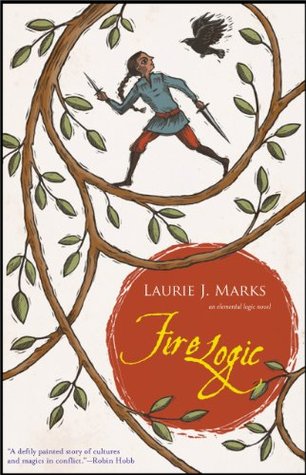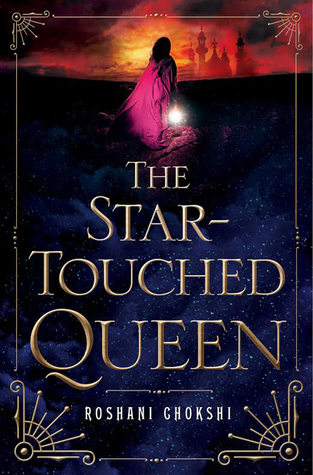![28449207[1]](https://brsanders.files.wordpress.com/2018/03/284492071.jpg?w=584)
Notes on Diversity/Inclusion:
Most people in the book, including the eponymous Strange, are an unspecified shade of fantasy brown. This has its pros and cons: there is at least some nominal representation for people of color here; Taylor has not chosen to populate her fantasy world with random White people. However, the representation may only be skin deep. It’s certainly something to read and have a brown person there on the page, but these are brown people without the weight and depth of a specific culture or history behind them.
That said, Strange the Dreamer does have some rather excellent representation along a couple of other axes. There are a pair of out queer characters just living their lives, loving each other (yay!). Lazslo Strange grew up a foundling, in poverty, and has a storyline where his class and how its constructed is sharply contrasted to that of Thyon Nero. The similarities and dissimilarities between them–the points of access one has to the other, and that the other lacks, for instance–speak volumes about the resources each commands or doesn’t, and how having resources (or not) throughout one’s life shapes how people interact with the world around them.
Strange the Dreamer also does a lot with the representation of and the theme of disability. Trauma, especially, leaks through the pages here, though Strange himself is one of the few characters untouched by it. Character after character is scarred, is broken, either physically or psychologically. There are missing limbs, missing memories, and missing people. One thing the book does extremely well is take note of the old wounds abuse leaves, and the way that people adapt to their vulnerabilities.
Content Warnings for Book:
- Rape is described and alluded to
- Emotional abuse and physical abuse are described and alluded to
- There are references to stolen and murdered children
- Mind control and coercion (I count what Minah is doing to the ghosts as this since the ghosts are still sentient and non-consenting)
- Arguably self-harm (Thyon Nero’s over-extraction of his spirit fluid)
Review:
Blurb (from Goodreads):
The dream chooses the dreamer, not the other way around—and Lazlo Strange, war orphan and junior librarian, has always feared that his dream chose poorly. Since he was five years old he’s been obsessed with the mythic lost city of Weep, but it would take someone bolder than he to cross half the world in search of it. Then a stunning opportunity presents itself, in the person of a hero called the Godslayer and a band of legendary warriors, and he has to seize his chance or lose his dream forever.
What happened in Weep two hundred years ago to cut it off from the rest of the world? What exactly did the Godslayer slay that went by the name of god? And what is the mysterious problem he now seeks help in solving?
The answers await in Weep, but so do more mysteries—including the blue-skinned goddess who appears in Lazlo’s dreams. How did he dream her before he knew she existed? And if all the gods are dead, why does she seem so real?
Welcome to Weep.
Strange the Dreamer is a luxurious treat of a book. I sunk into it and was swept up by it. There is a lot to love about it, and it starts, squarely, with Lazlo Strange himself. Lazlo is a wonderful protagonist: as bookish as the person reading the book, imaginative and sharp-tongued, humble and clever, a genuinely kind nerd who ends up on the quest of a lifetime alongside a frenemy to the one place he’s always wanted to go.
The trek to Weep was my favorite part of the book. It’s in this section of the book where Lazlo really shines. You see how he comes into his own on the road, how likable he is, and how inherently decent he is. The core mystery of Weep itself lingers around the edges of the story during these early chapters, teasing the reader, while the characters come into clearer focus. Some of the characters, like Calixte, the queer thief who ends up Lazlo’s quick friend, and Thyon, the alchemist who is perpetually wary of Lazlo’s inherent kindness, are real standouts.
Weep itself is a strange place, both within the story and as a reader. The Weep of reality is little more than a creepy sketch: we get the floating citadel, the scarred husks that still live in terror, and very little else. The Weep of Lazlo’s dreams is flooded with description, florid and bright, a complete and completely different place. I’m not sure how intentional this disconnect between real Weep and dream Weep was, but it was jarring for me that I had so little sense of place in real Weep.
The lens of the story narrows when Lazlo arrives in Weep, as well. Characters who were important on the journey suddenly drop off the page. New characters arrive. The change in cast is abrupt. Most notably, Thyon Nero, who was so fundamentally important in the first third of the book nearly disappears. This is not to say that the book is badly constructed–in fact, the ending has a huge twist which, when revealed, takes many very small asides and neatly slots them together like a puzzle box. That is to say that this reads almost like a duology shoved into one volume: Strange Gets To Weep, then Strange Dreams There.
There is one thing I did not like about Strange the Dreamer, and that was his romantic arc. I had two issues with it. First, it was predictably instantaneous and felt juvenile for it. Second, there was, in the particular societal moment we’re in, an age gap between the parties that made me uncomfortable.
Sarai, Lazlo’s love interest, was a decently interesting character in her own right,* but she was fifteen and naive. Lazlo had to be around twenty. Much is made in the book of his virginal stature, so he might be a pure and untouched twenty, but he is still a grown ass man, and by description, not a small one. The age difference between them was not romantic; it was uncomfortable. It was a power differential I could not unsee, and it was compounded by complications with the reveals with the endings. As Sarai’s role in the story becomes more constrained, Lazlo’s role takes on more power. By the end of the story, they are on far from an even playing field in their partnership.
Takeaway & Rating:
Strange the Dreamer is a lovely and intricate book. Despite a mishandled love story, this book has a cast of fascinating characters and tackles some heavy questions about the aftereffects of catastrophe and trauma. It’s definitely worth a read, and I’ll definitely be picking up the sequel.

*Sarai was sweet, and kind, and sequestered. She was a Rapunzel type, and I could have stood to see her have more bite to her, but she did have depth to her, and backbone when it counted.

![18068907[1]](https://brsanders.files.wordpress.com/2017/12/180689071.jpg?w=584)
![28220826[1]](https://brsanders.files.wordpress.com/2017/12/282208261.jpg?w=584)
![giphy[1].gif](https://brsanders.files.wordpress.com/2017/12/giphy11.gif?w=584)
![giphy[1]](https://brsanders.files.wordpress.com/2017/12/giphy12.gif?w=584)
























 Constance Burris is on a journey to take over the world through fantasy, horror, and science fiction. Her mission is to spread the love of speculative fiction to the masses. She is a proud blerd (black nerd), mother, and wife. When she is not writing and spending time with her family, she is working hard as an environmental engineer in Oklahoma City.
Constance Burris is on a journey to take over the world through fantasy, horror, and science fiction. Her mission is to spread the love of speculative fiction to the masses. She is a proud blerd (black nerd), mother, and wife. When she is not writing and spending time with her family, she is working hard as an environmental engineer in Oklahoma City.